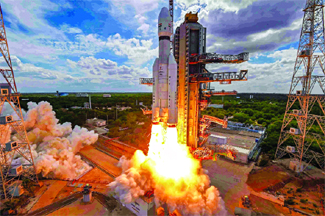
The Indian Space Research Organisation (Isro) has achieved a key milestone in its space program with the successful sea-level hot test of the CE20 Cryogenic Engine on November 29, 2024. Conducted at the Isro Propulsion Complex, the test is a critical step in enhancing the engine’s performance and reliability.
The CE20 engine powers the upper stage of Isro’s LVM3 launch vehicle, which has played a pivotal role in missions like Chandrayaan-2, Chandrayaan-3, and the upcoming Gaganyaan human spaceflight project.
The engine has already proven its capability in six successful LVM3 missions and is designed to operate at thrust levels ranging from 19 tonnes to an upgraded 22 tonnes for future missions.
One of the test’s highlights was the demonstration of a multi-element igniter, essential for the engine’s restart capability in space. This innovation ensures greater flexibility for complex missions.
Additionally, Isro introduced a Nozzle Protection System to address challenges such as vibrations and thermal stress during sea-level testing. The system simplifies testing and reduces costs while maintaining safety and efficiency.
The engine and testing facility performed flawlessly, meeting all expected performance parameters. With this success, the CE20 engine is now further prepared to support India’s ambitious Gaganyaan mission, which will send three astronauts into orbit.
This achievement shows Isro’s ongoing efforts to develop advanced space technology, enhance payload capacities, and strengthen India’s position in global space exploration.
As Isro continues to refine its capabilities, the CE20 engine remains central to future missions, paving the way for greater achievements in space.




Be the first to comment